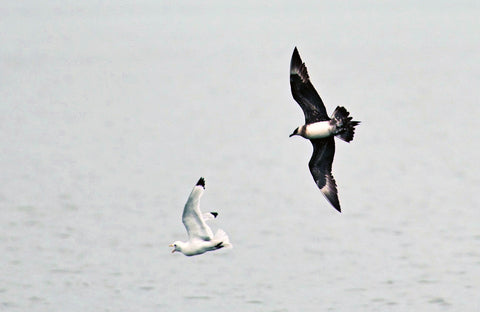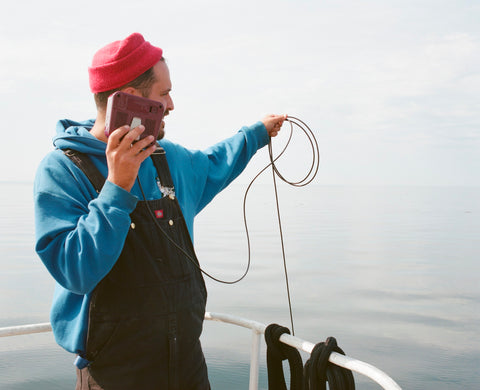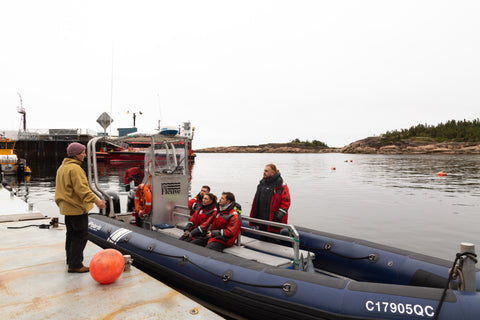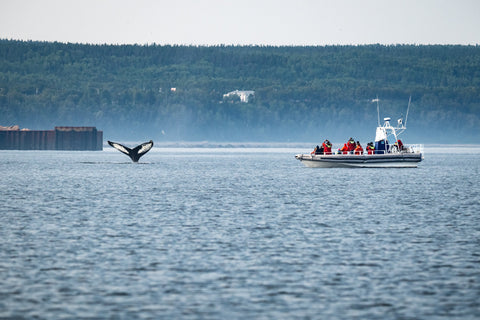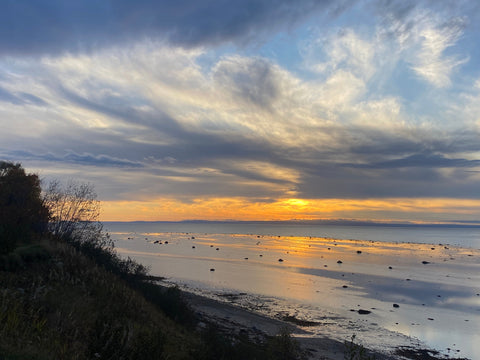
This is a question that often comes up in the industry and is practically impossible to answer. Any time is equally good!
Since the marine mammals that come to visit us are here to feed and can stay in the area for weeks or even months, we can see them both in the morning and in the evening.
What might influence the quality of observations does not depend on the time of day, but rather on weather conditions.
The wind
Wind is probably one of the worst enemies of whale-watching cruises. Obviously, when the wind picks up on the river, conditions on the water are truly challenging. Waves can significantly limit our movement and compromise the safety of the cruise. If conditions are expected to be too difficult, we always reserve the right to cancel a departure.
Even though it's the height of peak season, and there are dozens and dozens of whales out at sea, the wind and waves could prevent us from getting to the viewing sites.
The tides
Tides can sometimes affect whale behavior. In the St. Lawrence River estuary, tides can vary by up to 5 meters in a matter of hours. When the tides are rising, there can be an influx of nutrients from the depths, encouraging whales to feed closer to the surface. This can lead to much more active behavior, and sometimes even the whales can congregate in large groups of several individuals.
To check the tides, and whether your cruise is on a rising or falling tide, we recommend consulting the Government of Canada's tide forecasts.


